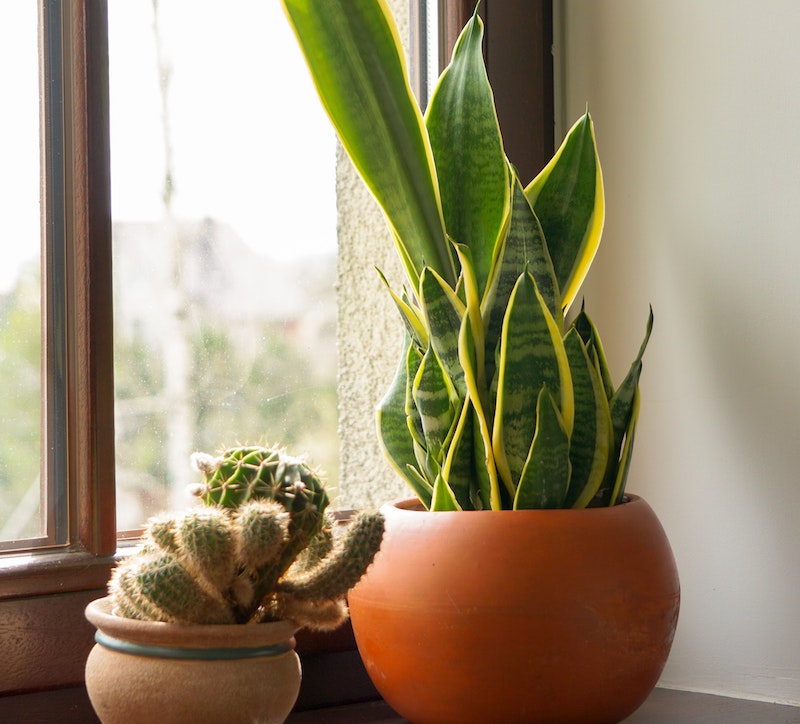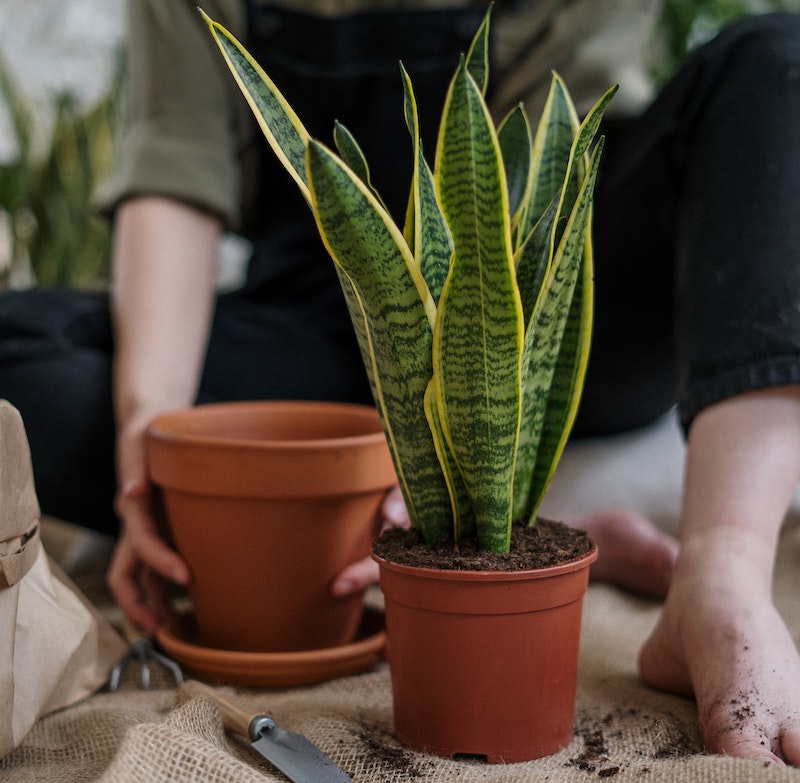Growing Snake Plant
Snake plant, known by its botanical name Dracaena trifasciata, previously known as Sansevieria, is a well-known indoor plant perfect for novices and experienced growers alike. Native to tropical regions in Africa, snake plant is a slow-growing, yet popular staple to any houseplant collection.
This plant can grow from just 1 foot tall to well over 8 feet tall, although it rarely grows to the high end of that range outside of its native environment. It is recognized by its wide, flat leaves, which are often striped in hues of green with bright yellow margins. Snake plants may even occasionally produce spikes of tubular, greenish-white flowers. Looking after this low-maintenance plant is simple and fulfilling.

Snake Plant Sunlight Requirements
Snake plants prefer to grow in bright indirect light, typically near west or south-facing windows. However, they are highly adaptable and can handle a variety of light conditions, including low and direct light. To acclimate your snake plant to direct light, set it in a sunny indoor location for 2 hours a day for a week. Increase this time by 2 additional hours for each consecutive week, moving it to a lower light location for the hours it is not exposed to direct light. Do this until the snake plant has been exposed to at least 6 hours of direct sunlight and is not showing any signs of stress.
Too much direct light may cause sunburn, which appears as dry, brown or yellow spots on the plant’s leaves. On the other hand, higher light levels may encourage blooming. Keep your snake plant a few feet away from windows, especially drafty windows, to avoid damage from chilly air or too much direct sun.
Planting Snake Plant
To plant snake plants, select a sturdy pot with adequate drainage. Plant in a pot that is about 2 additional inches in diameter from the snake plant’s current pot. Mix two parts cacti potting mix with one part peat-based potting mix to achieve a well-aerated, slightly acidic soil. Fill the pot about two-thirds full with soil. Next, transplant the snake plant into the new pot and fill with the remaining soil. Because snake plants experience slow growth and do not mind being somewhat root-bound, they only need to be repotted every 4-5 years.
Watering Snake Plant
Snake plants are drought tolerant in the wild and do not need to be frequently watered in a home environment. Depending on the plant’s specific conditions, snake plants may need to be watered every week to once per month. If the soil feels completely dry to the touch, it is safe to water your snake plant.
Under-watered snake plants will wilt, with their usually erect leaves drooping over. Overwatering will lead to root rot and attract pests that thrive in saturated soils, such as fungus gnats. Check for signs of root rot, which present as brown, squishy tissue at the crown and roots of the plant. Lower humidity levels are best for snake plants.

Fertilizing Snake Plant
Snake plants are native to regions with poor, well-drained soils and do not require frequent fertilization. However, fertilization may benefit the plant by promoting quicker, healthier growth. A slow-release granular formula can be applied once per year in spring. Alternatively, a liquid fertilizer diluted to half the recommended strength may be applied monthly during the growing season of spring through summer. A fertilizer with a 10-10-10 NPK ratio works best.
Common Snake Plant Problems
Leaves of a snake plant can turn brown or yellow if exposed to too much direct light. Clip off any dead tissue and relocate the plant to an area with indirect light. Yellowing leaves may also be a sign of overwatering or severe pest infestation. Fungus gnats, mealybugs, scale, aphids, and spider mites are the most common pests of snake plants. Diatomaceous earth or biological controls such as Bacillus thuringiensis (BTI) will kill fungus gnat larvae. Apply horticultural oil to deal with sap-sucking pests such as aphids, mealybugs, and scale. Be sure to dilute the horticultural oil with water per label instructions, and apply thoroughly on all leaf surfaces, including the undersides.
Another problem with growing snake plants is reluctancy to bloom. Snake plants rarely flower, but blooms can be encouraged by gradually increasing light levels while decreasing watering. This can cause the snake plant to flower in an attempt to propagate itself. Older, root-bound plants are also more likely to flower.
Propagating Snake Plant
Snake plants can be propagated by division or cuttings. For division, remove the entire plant from the pot and clear the soil from the roots. Locate the rhizomes, which are horizontal, root-like stems that grow in the soil. Using a sharp knife or pruners, cut in the middle of each rhizome. Each new division should have at least 2-3 leaves with a healthy root system. Replant the new divisions in soil with water.
For stem cuttings, use scissors or pruners to cut off a healthy leaf from the snake plant. Cut the leaf horizontally into 2-inch long pieces. Let the cuttings sit in a dry area for 1-2 days to aid in callus formation, which helps the new plant develop roots and survive. Rooting hormone may be helpful, but is not required. Stick the cuttings in soil or water and transplant into fresh soil once fully rooted.

Growing Snake Plant Outdoors
Snake plants are perennials in USDA zones 9-11. They perform best in temperatures above 70°F; anything consistently below 50°F could kill them. Snake plants can be kept outside during the summer months and brought back in once the weather gets cool. Check for pests before bringing snake plants back inside. They can be kept in a pot or planted in the ground in sandy, rocky soils similar to their native environment. If planted in the ground, space them roughly 1 foot apart. Snake plants can handle partial shade, but more sun is tolerated with proper acclimation.
 |
Lauren Youngcourt - Published 03-03-2023 |
